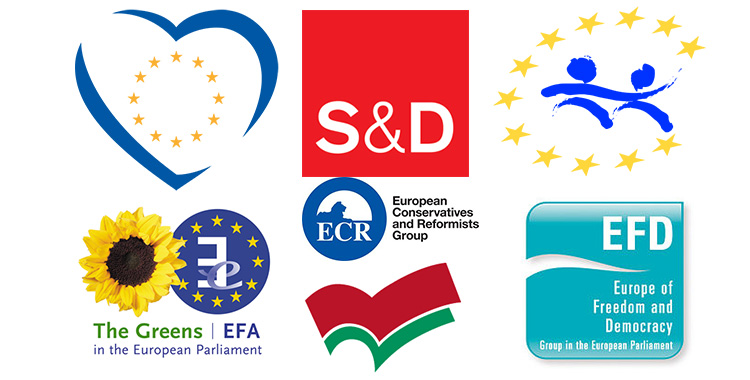To be familiar with the European political groups in the European Parliament (EP), along with their values, ideas and members, is a basic knowledge for everyone who is interested in the 2014 EU Elections (22 – 25 May, 2014).
Therefore, in this article, we will briefly provide you with basic info related to the political groups within the European Union (EU)! This might help filling the knowledge gaps, and would surely serve as a stepping stone for further reference. Our aim is to keep you 100% informed, while the upcoming elections are slowly, but surely, approaching.
The first elements to have in mind are that the Members of the European Parliament (MEPs) are not organised by nationality but by political affiliation.
In order to create a political group, the requirements are: a minimum of 25 MEPs and a representation of at least 1/4 of the EU’s 27 Member States. The MEPs may only belong to one political group.
As of now, there are 7 political groups, and a few members that did not join any, the so-called “non-attached members” (27 members).
The 7 political groups in the European Parliament represent a big variety of political views – from the moderates to the far left and the far right:
The Group of the European People’s Party (EPP) consists of moderate conservatives, and has 273 members.
The Group of the Progressive Alliance of Socialists and Democrats (S&D) consists of left-wing politicians, and has 189 members.
The Group of the Alliance of Liberals and Democrats for Europe (ALDE) is the party for liberal democrat values in Europe, and has 84 members.
The Group of the Greens / European Free Alliance (EFA) consists of Green MEPs and MEPs from parties, representing stateless nations and disadvantaged minorities. It consists of 59 members.
European Conservatives and Reformists (ECR) brings together MEPs from 10 EU countries, and is currently one of the medium-sized groups in the European Parliament, with 53 members.
Europe of Freedom and Democracy (EFD) – is a Eurosceptic political group in the European Parliament, and consists of 36 members.
Confederal Group of the European United Left / Nordic Green Left is a left-wing political group with 34 members.

We now have them listed, but how are they funded?
The European political groups receive funding from the European Parliament to meet expenditures, directly related to the objectives of their programs. They have been able to receive annual funding from the European Parliament, since 2004, in a form of an operating grant. It can cover up to 85% of the eligible expenditure of a party. The rest should be covered by themselves, for example through donations or membership fees.
If all this is already familiar to you, check out our next articles to dive more into the topics of the 2014 EU elections.

Leave a Reply